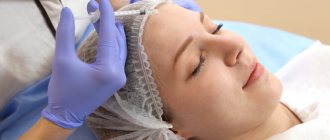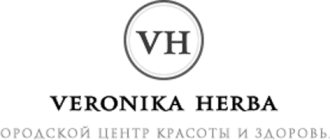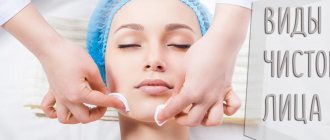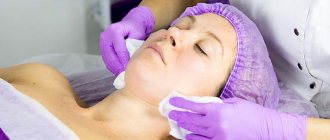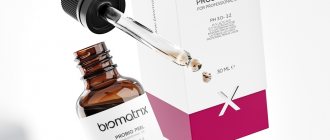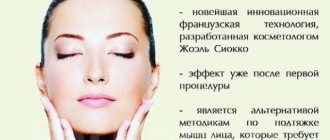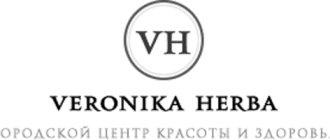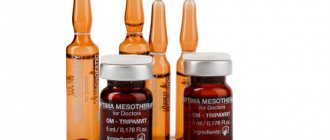Mesotherapy was first performed back in 1958, and the French doctor Michel Pistor is considered its inventor. But if it was originally conceived for the treatment of cellulite, today the main area of use of the method is to rejuvenate and solve problems with facial skin. With its help, it is possible to reduce and slow down age-related changes, improve skin condition, eliminate oily shine and solve a lot of other problems, which, combined with a high level of safety and a low number of contraindications, has made it one of the most popular cosmetic procedures.
What is mesotherapy
The procedure consists of intradermal administration of medicinal and vitamin preparations in low doses. This is a minimally invasive injection technique that allows you to eliminate many aesthetic problems of the face, body, and hair. After it, the skin is transformed, the skin becomes tightened and elastic.
Mesotherapy is carried out as a separate manipulation or part of cosmetic procedures. The drugs are administered with the thinnest needles to a depth of 1.5-13 mm, this depends on the area of work. At the age of 18 to 25 years, facial mesotherapy is more often performed to get rid of oily skin, acne and its consequences. After 25, it acts as a prevention of aging.
An improvement in skin condition is noted after the first session, but a course of treatment is required to solve aesthetic problems. The number of visits is selected individually. From 4 to 15 procedures may be required at intervals of 6-10 days. To get rid of cellulite, up to 15 sessions are required, to restore the oval of the face - up to 8, to eliminate bags under the eyes - up to 4.
What is the difference between mesotherapy and biorevitalization
The methods are very similar, but differ in the composition of the agents and the method of administration. For biorevitalization, gel-like preparations based on hyaluronic acid are used. Due to their dense consistency, they fill obvious wrinkles well, so the procedure is recommended for people over 30 years old.
During mesotherapy, liquid cocktails that contain various substances are administered. The cosmetologist selects the composition taking into account skin problems, age, and wishes of the client. They may also contain hyaluronic acid , but its amount will be significantly less than for biorevitalization. Due to the liquid form of the drugs, it will not be possible to fill deep wrinkles and folds. Due to the multicomponent composition, the range of indications for mesotherapy is wider.
Mesotherapy and biorevitalization can be used as two complementary procedures. They help improve skin condition, but have a different spectrum of action.
Foto-age Elastase
The drug from the Italian brand Mesotech is used to rejuvenate the face and body. Contains elastin, DMAE, organic silicon compounds, plant extracts. Smoothes and moisturizes the skin. Activates the production of collagen, glycosaminoglycans, elastin. Due to this, the skin becomes denser and the permeability of capillary walls decreases. Cells are well saturated with oxygen and nutrients.
The drug reduces the severity of age-related changes - wrinkles, creases, dullness and sagging skin. Effective for treating damage caused by UV rays.
Pros and cons of mesotherapy
The main advantage is the safety and non-toxicity of the drugs used, which extremely rarely cause side effects. Other advantages:
- wide age range;
- combined with other cosmetic procedures;
- minimal list of contraindications;
- persistent, long-lasting effect;
- suitable not only for women, but also for men;
- performed on an outpatient basis.
One of the disadvantages is the need for several sessions - from 4 or more, which depends on the problem being solved. After injections, slight swelling and discomfort at the injection site are possible, but this should not be a cause for concern.
Possible negative consequences
The concept of side effects is quite often associated with mesotherapy. Patient reviews often contain questions about whether or not to do a second procedure if negative consequences appeared after the first time. In fact, there is no need to be afraid of such manifestations; the human body reacts to the intervention and activates its resources, which is also very beneficial for skin rejuvenation.
What are the most common consequences of mesotherapy? The negative effect of the procedure can be expressed in such phenomena as:
- swelling;
- bruises;
- papules and redness;
- moderate pain.
What therapeutic effect does mesotherapy have?
The result is noted due to 2 factors: delivery of active components to the skin and the mechanical effect of the needle. At the injection site, many microtraumas appear, which trigger the production of their own elastin and collagen, as a result of which microcirculation and metabolic processes improve. Depending on the task and the composition of the cocktails, the following effects are noted:
- the elasticity and firmness of the skin increases;
- hair growth increases;
- the functioning of the sebaceous glands is normalized;
- Spider veins are eliminated and blood vessels are strengthened;
- dark circles and bags under the eyes disappear;
- The oval of the face is tightened, fine wrinkles and sagging skin are eliminated;
- pigment spots are eliminated;
- enlarged pores are narrowed, acne and its consequences are eliminated.
The cosmetic procedure smoothes out the “orange peel” and evens out the skin. It is effective in the presence of stretch marks, scars, scars due to stimulation of tissue regeneration.
Meso cocktail selection
The composition of the drug is selected according to indications, depending on the nature of the problems, age and individual characteristics of the patient.
List of main components of meso cocktails:
- Hyaluronic acid is one of the most popular ingredients for mesotherapy. Its action is aimed at eliminating the signs of aging. Moisturizes the skin. Stimulates the synthesis of skin proteins.
- Aloe extract. Promotes tissue regeneration and normalizes water balance.
- Ginkgo biloba extract. Used for anti-aging therapy. Improves blood circulation, strengthens the walls of blood vessels.
- Gentamicin sulfate is an antibiotic drug used to treat severe forms of acne.
- Glycolic acid - used to prevent age-related changes, treat acne and seborrhea. Eliminates hyperpigmentation, atrophic scars and stretch marks.
- Aminophylline. Promotes the breakdown of fat. Used for the treatment and prevention of cellulite and fat deposits.
- Artichoke extract. Relieves swelling. Also used around the eyes. Used in the treatment of cellulite, especially its edematous form. Reduces post-traumatic swelling after plastic surgery, deep peelings and injections. Eliminates the effects of Botox overdose.
- Hyaluronidase. Moisturizes the skin. Eliminates wrinkles. Removes toxins. It is used for the treatment of fibrous cellulite and the treatment of scars.
- Vitamin preparations:
- Ascorbic acid. Used for increased pigmentation. Improves skin color and tone. Eliminates the initial signs of aging and wilting, facial wrinkles and spider veins. Restores skin elasticity and prevents the appearance of ptosis.
- Aflutop. Helps maintain tissue elasticity. Participates in the natural synthesis of hyaluronic acid and collagen, stimulates the restoration process.
- Vitamin A (retinoic acid). Powerful antioxidant. Slows down the aging process. Stimulates collagen production and skin renewal, making it denser. Has a healing effect.
- Vitamin B1. Effectively eliminates signs of aging. Used to treat hair, promotes hair restoration and stimulates growth.
- Vitamin B2. Stimulates regeneration processes and is used in the treatment of acne, dermatitis and eczema.
- Vitamin B3. Actively used to prevent age-related changes in the skin, rejuvenates and moisturizes it. Used in the treatment of cellulite, atrophic scars and stretch marks.
- Vitamin B5. Activates the process of tissue regeneration. Promotes skin renewal. Increases the strength of collagen fibers.
- Vitamin B6. Eliminates dryness and relieves skin inflammation. Used for hair treatment.
- Vitamin B8. Used for seborrheic dermatitis, focal baldness, hair loss, as well as for the treatment of acne and stretch marks.
- Vitamin B12. Evens out skin tone. A powerful remedy in the fight against hyperpigmentation.
Areas of application of mesotherapy
The procedure can be used to eliminate aesthetic problems on any part of the body. Mesotherapy application areas:
- Body.
- Face.
- Hair and scalp.
- Eyes (eyelids, area around the eyes, bags and dark circles under the eyes).
- Stomach.
- Neck.
- Chin.
- Hips, buttocks.
- Chest (neckline area).
- Hands.
- Legs.
- Back.
- Nose and nasolabial folds.
- Lips.
- Vessels.
The low invasiveness of the procedure allows it to be used even on areas with thin and sensitive skin. It can be combined with other therapeutic and surgical techniques within the framework of aesthetic medicine.
Mesotherapy shows high effectiveness for baldness. According to reviews of people who have undergone the procedure, after 10-13 sessions, activation of the hair follicles is noted.
Indications and contraindications for mesotherapy
Mesotherapy is performed as a therapeutic and preventive procedure from the age of 18. This is a universal and effective manipulation that has a wide range of indications:
- rosacea;
- acne (acne vulgaris, rosacea);
- stretch marks;
- scars;
- bags, circles under the eyes;
- sagging, decreased skin tone;
- dark spots;
- wrinkles;
- swelling;
- oily, porous skin;
- cellulite;
- alopecia (hair loss).
Injections can serve as a preparatory step before other cosmetic procedures or during the recovery period after them. The procedure has a number of limitations:
- pathology of the coagulation system;
- intolerance to substances contained in the drug;
- pregnancy;
- tendency to form keloid scars;
- breast-feeding;
- period of exacerbation of chronic diseases;
- severe inflammatory process, fungal infection, open wounds in the work area.
Injection mesotherapy is not recommended when taking antiplatelet agents or anticoagulants due to their effect on the blood coagulation system. Time restrictions: menstruation, recent deep peeling, respiratory diseases.
Mesotherapy techniques and methods
Methods differ in the method of administering drugs to the treated area:
- Pinpoint (“prick by prick”) is a classic, easy-to-perform technique. The drug is administered with a needle at a right angle to a depth of 4 mm at a distance of 1.5-2 cm.
- Nappage (“coating”) – quick injections at an angle to the surface of the skin. The needle is inserted to a depth of 1 to 4 mm, which depends on the type of nappage: superficial, middle or deep. The distance between injections is 3 mm.
- Papular. The needle is inserted at an angle to a depth of 1-2 mm to form small papules (tubercles).
- Linear. More often practiced for the treatment of scars and stretch marks. The needle is directed tangentially, the drug is injected retrogradely to fill the dermis under the wrinkle, fold of skin.
- Infiltration. It is used primarily to get rid of excess fat deposits (orange peel treatment). The needle is inserted to a depth of up to 13 mm every 2-2.5 cm.
In therapeutic mesotherapy, the continuous infusion technique is used to relieve pain in arthritis and arthrosis.
Features of injection mesotherapy of the face
The injection technique of mesotherapy remains one of the most popular in modern cosmetology. Although it involves the use of the thinnest needles, the diameter of which is tenths of a millimeter, in most cases the skin is pre-treated not only with an antiseptic, but also with an anesthetic. The first allows you to disinfect the skin and reduce the risk of developing infectious complications, while the second blocks the transmission of pain impulses, which makes the procedure absolutely painless. Special creams or gels based on lidocaine are often used as an anesthetic.
Today there are 4 main injection techniques, which are no different from those typical for biorevitalization. This:
- nappage;
- papules;
- tubercles;
- linear-retrograde.
To increase the effectiveness of the procedure, especially with fine-wrinkled and deformation types of aging, it is recommended to perform lymphatic drainage vascular injection or capillary mesotherapy before it. This technique consists of making injections into specific areas of the face and neck, in particular in the projection of all groups of lymph nodes present on the face and neck. Sometimes the lower or middle third of the face along the massage lines and the double chin, if present, are also chipped. This allows:
- activate the outflow of lymph and reduce swelling by activating the activity of the regional lymph nodes of the face;
- activate blood circulation in the skin;
- strengthen the walls of blood vessels;
- reduce the size of fat bags on the face.
With the deformation type of aging, capillary mesotherapy is indicated before each procedure, while with the fine-wrinkle type it is traditionally performed only before the 1st, 3rd and 5th session. For lymphatic drainage vascular injection, the following drugs are chosen:
- GAG Complex DVL Capyl formula;
- Gingko Biloba;
- Artichoke;
- Rutin + melito extract and similar.
Nappage
This technique involves injecting the drug into different layers of the skin. As a result, they distinguish:
- superficial nappage, when the tip of the needle is inserted only into the very top layer of the skin (epidermis), which ensures the absence of blood, but also gives the least effect;
- median nappage, which involves the introduction of low doses of meso-cocktails to a depth of 1-1.5 mm, which almost always ensures the absence of papules, but is accompanied by blood dew;
- deep nappage, which consists of injecting the drug by 2-3 mm, which is indicated for patients with large skin thickness.
Papules
The essence of this technique is to introduce meso-cocktails into the upper and middle layers of the skin located at an angle of 15° to the skin in such an amount that it leads to the formation of small tubercles at the site of needle insertion. Their size directly depends on the amount of the drug administered. Small papules 1-2 mm in size are made in the area around the eyes, and injections are performed at a distance of 0.3-0.5 mm from each other. In areas where the skin is denser, larger papules up to 3-4 mm in size are made, but they are placed at a distance of 1-1.5 cm from each other. But the size of the papules directly affects the period of their resorption: the greater the amount of the drug administered, the longer they will dissolve.
As a rule, papules completely resolve in 2-7 days.
tubercles
The essence of the technique is similar to the previous one, but the needle is inserted at an angle of 45° and along its entire length. This ensures deeper penetration of the mesococktail into the layers of the skin and the creation of a kind of drug depot in it. As a result, there are no bulges on the surface of the skin, although at first after the injections there is some swelling at the sites where the needle was inserted.
The disadvantage of the tubercular technique is the high risk of small bruises.
Linear-retrograde technique
This technique of facial injection mesotherapy is considered the most effective, but also the most difficult, since it has much in common with facial reinforcement. To use it, needles 12-13 mm long are used, while other techniques involve the use of needles 4 mm long. When choosing a linear-retrograde technique, the needle is inserted into the skin parallel to its surface along its entire length, but the drug is injected only during the reverse stroke of the needle. Therefore, fewer injections are required, but the procedure is more traumatic, although it has an additional rejuvenating effect by activating the synthesis of collagen and elastin.
Types of mesotherapy
There are two types of procedure: injection and non-injection. In the first case, active substances are delivered to the skin using ultra-thin needles manually or using hardware. “Manual” mesotherapy allows you to work in the most delicate areas with thin skin, the drug is used sparingly.
Automatic injectors (guns) are suitable for working on a large area of skin (buttocks, thighs, abdomen, etc.). They facilitate and speed up manipulation, helping to quickly work on a large area in a short period of time. The device provides the exact depth of needle insertion and volume of the drug.
The second type of mesotherapy is the introduction of meso-cocktails without the use of needles. The active ingredients penetrate the skin through laser irradiation, magnetic and electric waves, and oxygen treatment. The method is ideal for people who want to undergo a rejuvenating procedure, but are afraid of injections.
Complications, side effects and consequences of mesotherapy
An allergic reaction to the administered substances is possible, which can manifest itself as severe swelling of the skin, itching, and hives. Other negative effects:
- Pain. When the drugs are administered, there is pain and sometimes a burning sensation, which is associated with irritation of skin receptors. If necessary, the cosmetologist administers local anesthesia using gels.
- Redness. Normal reaction to injection. The redness disappears within half an hour, maximum after 2-3 hours.
- Bruises. They occur due to damage to blood vessels during the injection. They dissolve from 2 days to 2 weeks depending on the area of the skin , the condition of the vascular wall, and the degree of fragility of the blood vessels.
Minor swelling is possible - the body’s natural response to skin injury; it goes away on its own within 1-2 days.
Preparations, remedies and medicines for mesotherapy
Taking into account the principle of action, mesotherapy drugs are divided into several groups: vitamin, vascular, lifting, anti-inflammatory, lipolytic. The composition may include:
- dimethylaminoethanol;
- lipolytics – liporcil, silicine, lopocat, phosphodithylcholine;
- vitamins – A, C, E, B;
- acids – glycolic, pyruvic, hyaluronic;
- plant extracts – aloe vera, green tea, guarana, artichoke;
- minerals – silicon, magnesium salts, zinc, selenium;
- antibiotics, anti-inflammatory drugs;
- extracts of animal origin - elastin, peptides, collagen, etc.
The specialist selects the composition of the cocktail individually, taking into account skin type, main problems, age and other factors.
What drugs are used for what problems?
Anti-aging
These drugs are the most popular in mesotherapy procedures.
Action of drugs:
- skin lifting;
- activation of cells for the natural formation of collagen and elastin;
- slowing down skin aging processes.
Lipolytic
They are mainly used for figure correction, but are also used in facial mesotherapy.
Action of drugs:
- resumption of normal lymph circulation;
- improved blood circulation;
- removal of edema.
Diuretics
Action of drugs:
- relieving facial swelling.
Antiseptic
Action of drugs:
- elimination of acne and pimples on the face.
Whitening
Action of drugs:
- elimination of skin pigmentation.
Recommendations for patients
After the injections, the cosmetologist gives recommendations for the recovery period, which takes an average of 3-5 days:
- do not visit the sauna, bathhouse, solarium;
- do not sunbathe in the sun;
- do not perform peelings, massages and other procedures that involve mechanical impact on the skin;
- limit physical activity.
After the procedure, you should stop drinking alcoholic beverages, as they promote vasodilation. It is recommended to use sunscreen before going outside. In the first days, treat the skin with chlorhexidine and healing gels. Decorative cosmetics, especially foundation, should be discarded in the first 2 days so as not to irritate the skin and provoke inflammation.
It is not recommended to take blood thinning medications (aspirin, etc.) for 2 days after injections.
Where can you get mesotherapy in the Russian Federation?
Mesotherapy is one of the most popular procedures performed by cosmetologists in medical or cosmetology centers. When choosing a clinic, you need to pay attention to the availability of the necessary licenses to carry out this activity, as well as a diploma from a specialist.
Before mesotherapy, it is recommended to clarify which drug manufacturers the institution works with, view photos of the work, and a description of the procedure. The price of clinic services depends on the drugs used, the number of injections and the area of influence.
Mesotherapy is an effective cosmetic procedure. It solves a number of problems with skin and hair, while avoiding surgical intervention . The result can last up to 1.5 years; it is recommended to repeat the course once a year.
How to choose a clinic for non-injection mesotherapy
Now you know about the procedure, its advantages and disadvantages, even the estimated price for non-injection mesotherapy. All that remains is to decide on the choice of clinic.
What characteristics should you pay attention to?
- Clinic experience. The longer she provides services, the more trustworthy she becomes.
- Qualification of specialists. All personnel must have medical education. Retraining and advanced training courses will be a plus.
- Diplomas and certificates. Both the clinic and its specialists must be present. Do not hesitate to ask for documents confirming the qualifications of doctors and the right to provide cosmetology services.
Attention! Does the medical center have regular customers, and are there no negative reviews on the website or third-party sites? Perhaps this is exactly the clinic you have been looking for for a long time.
Non-injection mesotherapy is recommended for people who do not like injections and avoid complications after cosmetic procedures. The method allows you to give freshness to the skin and achieve its rejuvenation without any discomfort.
Why clients choose Veronika Herba Beauty and Health Center:
- This is a beauty center where you can take care of yourself at a reasonable cost, while your face and/or body will be treated not by an ordinary cosmetologist, but by one of the best cosmetologists in Moscow. This is a completely different, higher level of service!
- You can receive qualified help at any time convenient for you. The beauty center is open from 9:00 to 21:00, seven days a week. The main thing is to agree with your doctor in advance on the date and time of your appointment.
Sign up for a consultation with a specialist by phone +7 (495) 085-15-13
, and you will see for yourself!
